Don't wanna be here? Send us removal request.
Text
Reference list:
Wordpress.com, 2017. What Is Technological Determinism? [ONLINE] CC FUNG https://ccfung.wordpress.com/2017/11/25/technological-determinism/ [Accessed:15/04/18]
Smith/ Merritt Roe and Marx/ Leo, MRS., LM., 1994. Does Technology Drive History?: The Dilemma of Technological Determinism [online] US: MIT Press
The franklin institution, TFI., 2019. WHAT’S THE DIFFERENCE BETWEEN AR, VR, AND MR? https://www.fi.edu/difference-between-ar-vr-and-mr
Winner/ langdon, LW., 1997. Autonomous Technology: Technics-out-of-control as a Theme in Political Thought., 65
Bardi/ Jeo, JB., 2019. What is virtual reality. [online] https://www.marxentlabs.com/what-is-virtual-reality/
Makeuseof, MUO., 2017. History of Pokémon: games, cards and more. https://www.makeuseof.com/tag/history-pokemon/
Marasigan/ Mark, MM,. 2016. POKEMON GO DEMOLISHES FIVE GUINNESS WORLD RECORDS IN FIRST MONTH. [ONLINE] https://mmos.com/news/pokemon-go-demolishes-five-guinness-world-records-first-month
Knowledge Wharton high School., 2016. Reality Check: The Technology Behind “Pokemon Go” [online] https://kwhs.wharton.upenn.edu/2016/08/pokemon-go-technology-behind-merging-digital-physical-world/
Baudrillard/ Jean, JB., 1981. University of Michigan Press. France: Éditions Galilée.
IMBD, 1999. The Matrx plot. Retrieved from https://www.imdb.com/title/tt0133093/plotsummary
Plunkett/ Luke, LP, 2015. The banned Pokémon episode that gave kids seizures. Retrieved from https://kotaku.com/the-banned-pokemon-episode-that-gave-children-seizures-5757570
Flint/ Hanna, HF, 2015. This Pokémon episode was banned because it caused seizures in 700 Japanese children. Retrieved from https://metro.co.uk/2015/10/21/this-pokemon-episode-was-banned-because-it-caused-seizures-in-700-japanese-children-5452521/
Robinson/ Andrew AR, 2015. An A to Z of Theory | Jean Baudrillard: Hyperreality and Implosion. Retrieved from https://ceasefiremagazine.co.uk/in-theory-baudrillard-9/
Hayles, N. Katherine, N.KH., 1991. The Borders of Madness. Science Fiction Studies, 18(3), 321-323. Retrieved from http://www.jstor.org/stable/4240084
Nozick/ Robert, RN., 2001. Anarchy, State and Utopia. New Ed edition. England: Wiley-Blackwell.
Resnick/ Brian, BR., 2019. Have smartphones really destroyed a generation? We don’t know. https://www.vox.com/science-and-health/2019/2/20/18210498/smartphones-tech-social-media-teens-depression-anxiety-research
Fader/ Sarah, SF., 2018. Social Media Obsession And Anxiety. https://adaa.org/social-media-obsession
Miller/ Caroline, CM., https://childmind.org/article/is-social-media-use-causing-depression/
0 notes
Text
Part 2...
Jean Baudrillard: Simulacra and Simulation
Jean Baudrillard was a French sociologist, philosopher and cultural theorists. He is most famous for his work on post-structuralism, early post modernism and his ideas help shaping the idea of hyperreality. In his book Simulacra and Simulation (1981) he talks about the idea of us living in the age of simulation. In our postmodern culture society, we are servant to maps, symbols and models, making us lose all contact with the real world outside of the map. We wouldn’t be able to distinguish from the what is real and what is simulated, the map becomes what’s real "The territory no longer precedes the map, nor does it survive it. It is nevertheless the map that precedes the territory—precession of simulacra—that engenders the territory" ("The Precession of Simulacra" 1). He stated when it comes to postmodern simulation and simulacra, “It is no longer a question of imitation, nor duplication, nor even parody. It is a question of substituting the signs of the real for the real” ("The Precession of Simulacra" 2). We have lost all ability to make of the distinction between nature and artifice.

Image from https://baudrillardstudies.com/baudrillard-scrapbook/
Photo by Richard Avedon
jean Baudrillard and The Matrix
The matrix is about a computer hacker Thomas Anderson, learns about the true nature of his reality and the role he plays in the war against it’s controllers. (Kenneth Chisholm). In one the scenes of the movie Thomas picks up a book: Jean Baudrillard’s Simulacra and simulation. The inclusion of the book holds great meaning as the movie takes a lot of influence from his idea of hyperreality, and hyperreal. Thomas learns about him living in a hyperreality, a simulation- everything he knew wasn’t really real. The Matrx itself is used as a virtual realty medium to illustrate the concept of hyperreal. The Matrx is an illusion created by the AI for a purpose.

image from https://mikesyear2uni.wordpress.com/2013/11/08/authenticity-baudrillard-wilde-and-benjamin/
A shot from a scene in The Matrx
Hyperreality
‘Hyperreality’ was coined by Baudrillard, meaning a social reality in which a reality is created or simulated from models of reality that is generated from ideas. (Robinson, 2012). Our reality gets simulated and heightened and which causes us to be in a hyperreality. With technology like AR and VR and the growing MR, we can now truly enter a simulated world at any moment, with apps, game or headset.

image from Google images
The headset: 2018
New developments of apps for the VR, has added to the real life real to the headset. Now you can watch YouTube with the YouTube VR, receive messages, meditate, check emails, watch Netflix. Interact with other user’s avatars, communicating through the headset in a game called VR chat.
A man named Jack Wilmot did an experiment where he ‘lived’ in a VR headset for a week. He always made sure to have a headset on, blacking out his windows blocking the outside world, switching headsets for different activities. On his experience he says “...this headset allows anyone to create their own environment”. If you’re feeling stressed, you can switch to being submerged into a natural environment. “Everything is in the headset”. With the incorporate of everyday activity in the Virtual world, our generation can spend more time in a simulated reality than our actual reality. His experiment shows how we could live a sustainable life in the simulacra that is the headset as it still allows us to function normally.
youtube
Video from Youtube - I spent a week in a VR headset, here’s what happened
Will VR replace real life?
According to Jean Baudrillard’s theory, reality is a simulacra. He argues in the age of media we already are living in a virtual reality. His theories stand correct precisely in today’s society. I believe that there are and always have been simulants in the world that proved the experience of a hyperreality. From natural things outside of our control, like our brain hallucinating to meditation. To more man-made simulants like books, movies, social media, Disneyland.
And now AR, VR and MR.
A fair critic of Jean Baudrillar was from N. Katherine Hayles in her book ‘The Borders of madness’, she argues
“Every existing simulation has boundaries that distinguish it from the surrounding environment. Disneyland sports a fence, dense hedges, and acres of parking lots. Virtual reality environments are limited by the length of the cables attaching the body apparatus to the computer.” (1991)
This is true. We have the option to disconnect.
But what if the technology develops to perfection, and it give us everything we need in it’s virtual world?
And we truly are not capable of distinguishing VR from realty.
AR vs and MR are ‘escapes from reality’, but what if they become reality?

Image from https://uploadvr.com/high-end-vr-future/
Imagine …in the distant future...
A SONY super high-tech headset that lets you experience anything you want. And it feels real. Life like.

- It takes away all your worries
- Brings all pleasure
Once you plug in, you won’t know that you’re plugged in.
Would you plug in?
This idea is based on Robert Nozick 1974 book: Anarchy, State, and Utopia. Where he proposes the experience machine. He stated “Suppose there were an experience machine that would give you any experience that you desired... All the time you would be floating in a tank, with electrodes attached to your brain.” …A VR headset... Nozick assumes that most people would not plug in.
With the advancements in today’s technology, the machine isn’t hard to imagine for the distant future...
Most people would argue that we would be able to plug in and out (if there was that option) like the stimuli from video games. But with the game being able to give you every desire, returning to the ‘real world’ where you can’t be given everything you want, could cause a feeling of sadness - would people be able to control and self-discipline to not spend to not plug in once and never plug back out. What if all their friends and family are already plugged in too?
Why wouldn’t you plug in?
There are some issues with posing this question, one being that it’s a big generalization to make, even with all the pleasures that would be provided inside the headset, we wouldn’t be able to truly experience it because we wouldn’t be able to feel it. The virtual experiences that we would have can only be replicated to a certain extent. Playing in the world cup and scoring the winning goal is an experience that cannot be replicated because of the emotions.
Another issue is assuming that we would pick the pleasure offered to us over the issues the real-life experience of the real world. Maybe it we would miss the feeling of living, that again cannot be replicated.
The influence of social media
I think VR technology has the capability to cause a societal shift. If the technology was developed enough to offer us a better reality to our own. It is capable of a causing a shift. However, I don’t believe that it could cause it alone. Social media would play a big part. Social media is new age technology, but it would play its own sperate part.
Social media has taken over our world. It is inescapable in my generation, generation Z. My generation live our lives on social media, people post about every detail of their lives everyday on a platform such as Twitter, Instagram, Facebook... but they only show us what they want us to see, social media allows you to have no filter and use filters at the same time. People can present their best image to you and you won’t be able to tell the difference. This is problematic as it could lead to depression and anxiety. There are inconclusive research on weather social media is a direct cause of depression and anxiety, but it does seems to be a cause. The chair of the psychology department at Stanford University, Anthony Wagner states “... our media use behavior is actually altering our cognition and underlying neurological function or neurobiological processes? The answer is we have no idea.” (Resnick, 2019)
Although, we don’t know if the official cause, our obsession with it does play a major part in the cause of depression and anxiety. According to experts “almost 20% of people with social media accounts cannot go more than three hours without checking them” (Fader, 2018). It is not hard to miss the amount of people walking around with their heads in their phones, we’ve all been guilty of doing it. But (for the most part) my generation are able to distinguish from social media and real life. But what about the generation after us?

Children are using social media just as much as adults are causing growing concerns on its effects on their development. “One of the biggest differences in...current teenagers and young adults... is that they spend much less time connecting with their peers in person and more time connecting ...through social media.’ Recent studies show that teenagers and young adult who spend the most time on Facebook, Twitter and Instagram and other platforms “...were shown to have a substantially (from 13 to 66 percent) higher rate of reported depression than those who spent the least time” (Miller, 2017).

I think Social media has become too problematic itself, with people not having the consciousness to distinguish reality from the simulation of reality that is social media. Social media is a hyperreality.
To conclude, I think that the in this moment in time the technology isn’t powerful enough to cause a societal shift, but with the rate in which it is enhancing, it isn’t so wacky to think that one day AR, VR and MR replace reality, therefore changing our cultural and societal values. Technology (and social media) could be the main deciding determinism for the shift.
1 note
·
View note
Text
Technology and Society - VR, AR, AND MR
In this blog I will be looking at answering the question: could new age technology such as AR, VR AND MR, possibly cause a shift in our society and culture? Looking at theories of technological determinism (TD), focusing on its assumptions about how a societies social structure and cultural values are determined by its technology advances. Also, looking at the work of Jean Baudrillard and his theory on hyperreality, and his 1981 book simulacra and simulation, also looking at how the new technologies listed above can let us transcend our perceived realty into anther that lets us live in a simulated world? I will be focusing on the AR game Pokémon Go as my case study, but I will also be making references to other games through the blog.
Technological Determinism (TD)
Technological determinism, a term first coined by ‘Thorstein Velben’ in 1920, is according to ‘Ferrante’ is a reductionist theory that presumes a society’s technology drives the development of it’s social and cultural values (Fung, 2017). This theory aims to provide a link between the nature of society and technology. It attempts to give an explanation as to whom or what could have a controlling power to cause a cultural change, by questioning to which degree human thought or action is influenced by technological factors. However, there are many different versions of the (TD), In the book, ‘Does technology drive History?’, the ideas of technological determinism takes many forms, Ranging from ‘hard’ and ‘soft’ extremes (1994). In his book, Autonomous Technology, Langdon Winner states, “changes in technology are the single most important basis of change in society” (1977), he argues the core assumptions of the theory is that technology forms the basis of social life. With the development of the virtual reality game technology; could it cause a major societal shift in the new age of technology unlike we’ve seen before?
Augmented reality (AR), Virtual reality (VR) and Mixed reality (MR)
Augmented reality adds digital elements to the person’s actual environment often by using the camera on a smartphone. Examples of this would be the use of filters on apps such as snapchat, Instagram, and the most popular, Pokémon Go.
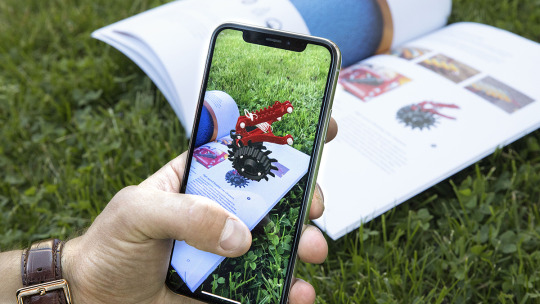
Image from https://www.vaderstad.com/ca-en/about-us/news/news-archive/2018/international/vaderstad-introduces-ar-to-the-farming-industry/
Virtual reality (VR) is a complete immersion experience that shuts out the physical world.
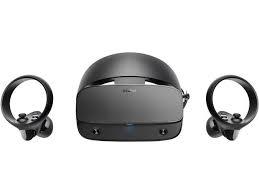
Image from http://www.technologyrecord.com/Article/microsoft-outlines-three-trends-that-will-impact-mixed-reality-in-2018-63570
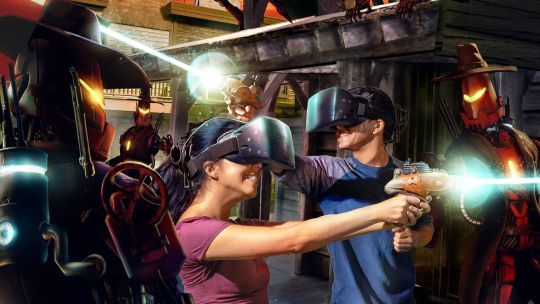
image from https://veer.tv/blog/best-vr-games-of-2018-top-15/
Mixed reality (MR) experience, combines elements of both AR and VR, real-world and digital objects interact. (The franklin institute, 2019)
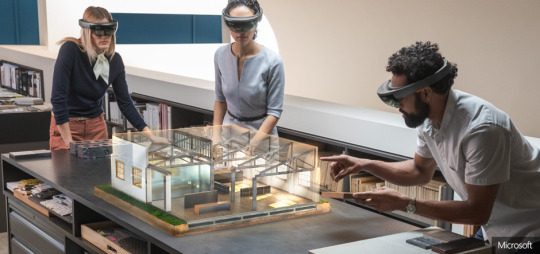
Image from http://www.technologyrecord.com/Article/microsoft-outlines-three-trends-that-will-impact-mixed-reality-in-2018-63570
Virtual reality is the use of computer technology to create a simulated environment (Bardi, 2019). The first instance of virtual reality was the panoramic paintings, that were made to create the illusion of being somewhere you are actual not. Exhibitions in museums of world war one, for example, to help to get a better experience. In the 1930s the idea of virtual reality was still only being thought of, science fiction writer Stanley G. Weinbaum, had the idea of goggles that would let the wearer experience a fictional world right in front of them. And today we have the Google glasses, which although doesn’t let us use whole new worlds, it still lets us see things that are not really there. ‘The Sensorama’ was invented by cinematographer Morton Heilig, it was an arcade-style theatre cabinet. A person could sit on the chair and be completely immersed into the film playing in front of them. It featured stereo speakers, a stereoscopic 3d display, fans, smell generators and a vibrating chair. Heilig’s next invention was the Telesphere mask in 1960, but it didn’t have motion tracking. However, motion tracking was added a year later, by two Philco Corporation engineers Comeau & Bryan. In 1995 Ivan Sutherland suggested HMD into the world of virtual reality, which he described as “ultimate display”. He wanted something that would give the ability to interact with objects in the virtual world in a realistic way. The first headset was released by SEGA, The Sega VR headset in 1993. At the time selling for $332. But as the idea of VR was still brand new, the release was flop, not selling as intended by Sega.
And then VR as we know it...
To experience AR all you need is your apple or Samsung smart phone, but VR you will need a headset. These headsets go from £30 to £500, depending on the quality and what customers are looking for.
The history of Pokémon-
Satoshi Tajin was the owner of the ‘Game freaky’ magazine. Himself and his co-worker and friend, Ken Sugimori (the illustrator of ‘Game freaky’ decided to make their own video games, as they thought all the other video games at the time were boring or bad. So, on April 26th 1989, the magazine turned to an official game development company. The company went on the create successful games: Yoshi for the NES, Mario and Wario for the Super Famicom, and Postman for SEGA (Bates).
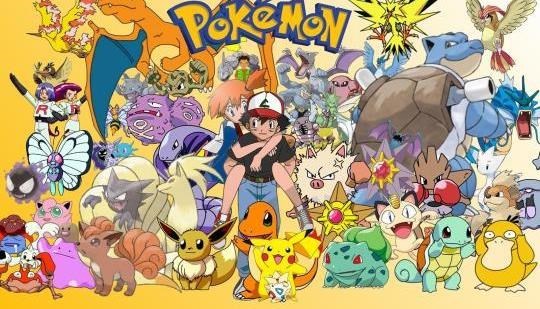
Image from https://n4g.com/news/1794471/top-5-original-pokemon
On Nov 27th 1996 came the release of Pokémon Red and Pokémon Green for the Nintendo GameBoy. Pokémon was a game in which players take the role of the protagonist number 721, they set out on adventures to collect and train creatures known as Pocket monsters - (hence the name Pokémon). With the ultimate aim of the game being to defeat 8 Pokémon gym leaders, stop and evil corporation and battle your way to becoming the best. But that what made it such a fun game, the end all aim for players was to collect all 151 Pokémon. However, not all Pokémon were in one place, you had to search for them across the growing world of Pokémon. The Game Boy allowed players to link cables and have battles against one another and trade Pokémon. This opened the door for even better adventures with your friends. The game become very popular, making millions in Japan. Causing the campany make re-releases limited edition Pokémon. The game didn’t get a world wide release until September 28th 1998, Pokémon Red and Blue, in America. And when it was released worldwide, it become a worldwide phenomenon, following were successful releases of Pokémon anime series, Manga, trading cards and games. The sequel, Pokémon 2: Gold and silver come out on the 21st 1999 in Japan and later in the US October 16th 2000. And has since had many other sequels.
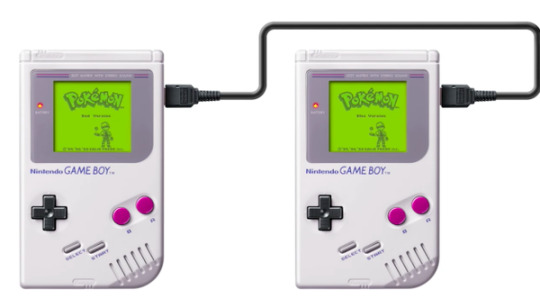
Image from http://www.escapistmagazine.com/articles/view/video-games/15434-Pokemon-20th-Anniversary-Tribute
Pokémon anime-
The first episode aired on 1 April 1997 in Japan, not being broadcasted in the US until September 1998. It was a success and has been running ever since. On season 1 episode 38 episode, ‘Electric Soldier Porygon’ viewers started to complain after an explosion on the episode. The explosion was extremely bright with intense lights flashing blue and red rapidly, it caused children to “experienced blurred vision. Others felt dizzy, or nauseous. In extreme cases, some even experienced seizures and cases of temporary blindness”(Plunkette, 2015) although it didn’t last very long. it had effects on a total of 700 viewers, who were rushed to the hospital. That episode has never been shown again. This incident holds the Guinness world record for Most Photosensitive Epileptic Seizures Caused by a TV Show. (Flint, 2015)

Image from https://www.gamnesia.com/news/limited-edition-pokemon-anime-box-sets-for-seasons-1-2-and-advance-series-c
Pokémon Go!
On July 6th, 2016 the mobile app game Pokémon Go was released, available for download on iOS and Android devices, and was an instant hit. Becoming the most revenue grossed by a mobile game in its first month with $206.5 Million. (Marasigan, 2016) . Players can create an avatar, who is then placed on a map according to the players geographical location. Players can then move around collecting Pokémon as their location has been transformed into the world of Pokémon, with places like ‘PokéStops’ and ‘Pokémon gyms’ which were now battle locations for players, this is all possible with the app’s AR feature. The players can see, and hear the Pokémon as they catch em’, bringing it to life, providing an experience like never before. Players can like feel like Ash when they play. That’s what made it so popular, it seemed like everyone was playing Pokémon Go, didn’t matter what age, background, or location, at the parks, gyms, or schools, “millions of people roaming around the physical world to capture virtual characters” (KnowledgeWharton high School, 2016). Pokémon Go was about the experience. Although, we had experienced AR in the form of snap chat/ Instagram fillers, this was the first time it was presented to us in this form. A big technology such as AR being so accessible, at any point we could take out our phones and transport to another world, another simulation but still within ours.
youtube
1 note
·
View note